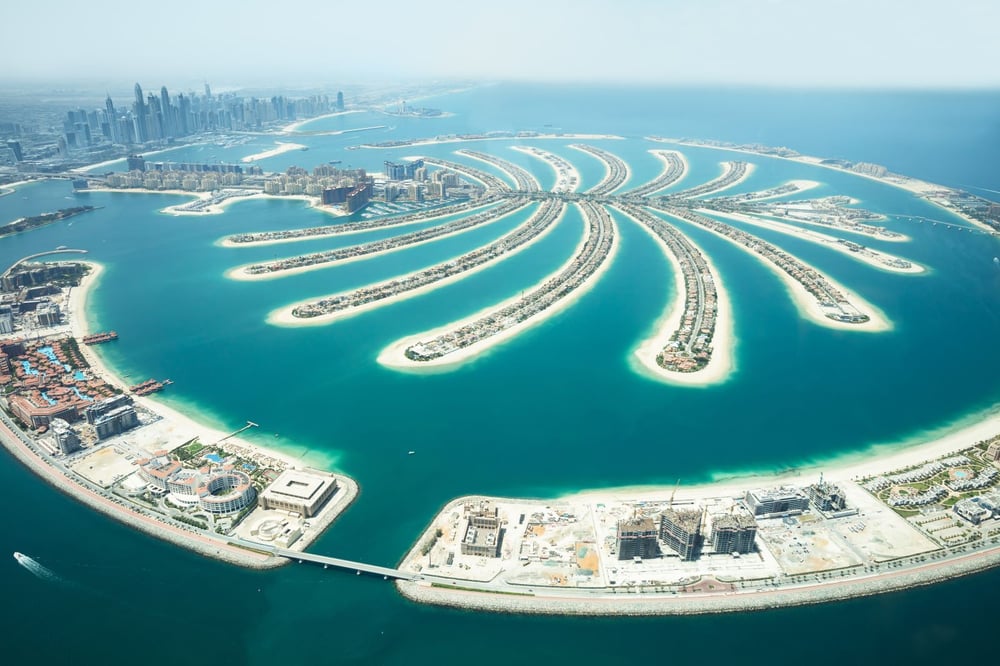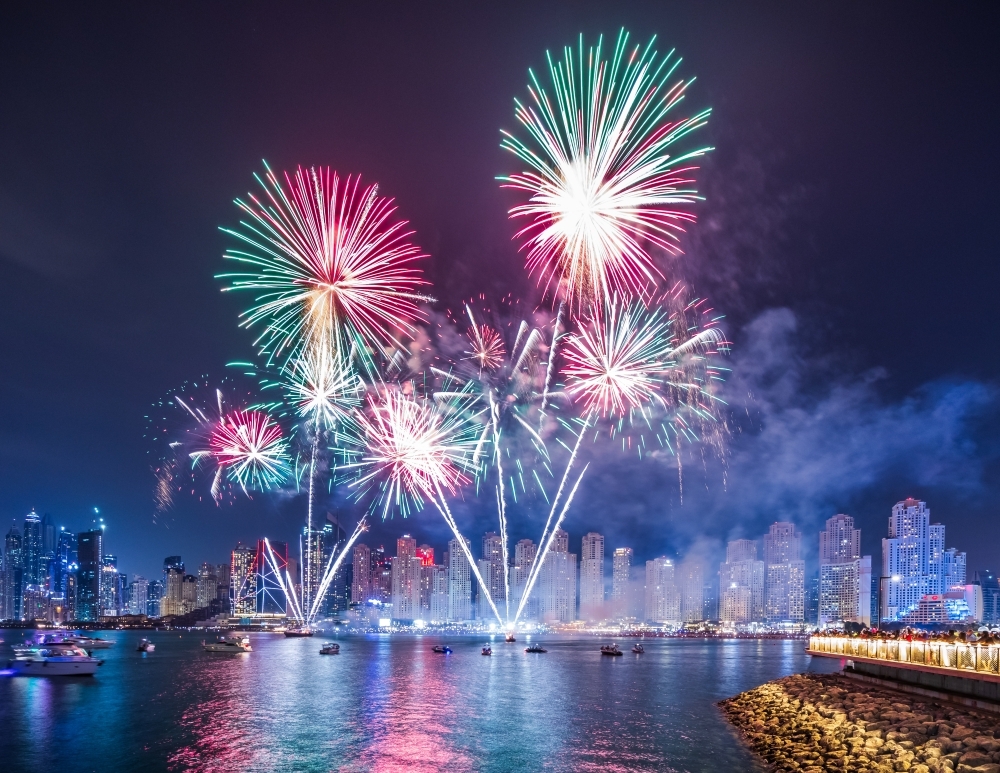Palm Jumeirah Facts
Everyone knows Palm Jumeirah is an artificial island shaped like a palm tree. Most people know it's visible from space. But behind these headline facts lies a collection of stories that reveal just how extraordinary this project really was – and continues to be.
The Palm required 94 million cubic metres of sand to build. That's a statistic that appears in every article about the island, but the reality behind it is more remarkable than the number suggests. The sand couldn't come from just anywhere – desert sand was too fine and would wash away. Instead, it had to be dredged from specific locations in the Gulf where the grain size was exactly right. The operation required a fleet of specialised ships working 24 hours a day for over three years, moving enough material to fill 37,000 Olympic swimming pools.

Built to Withstand Time and Tide
The breakwater that protects the Palm consists of 7 million tonnes of rock, but the real engineering challenge wasn’t the quantity – it was the precision. Much of the placement was done using GPS-guided barges, but in key areas, divers helped position stones to ensure a barrier that would protect the island while still allowing enough water circulation to keep the lagoons healthy. The breakwater extends 11 kilometres around the crescent and is positioned precisely enough to help maintain a modest temperature difference between the inner and outer waters.
What’s less well known is that the entire island moves. Not in any dramatic way, but the Palm settles by approximately 2-3 centimetres per year as the sand compacts under its own weight and the weight of the developments built on top. This was anticipated during construction, and every building is engineered to accommodate this gradual settling. The monorail tracks, for instance, include adjustment mechanisms that are regularly calibrated to maintain their precision.
The trunk of the Palm is 2 kilometres long and 300 metres wide – dimensions calculated to optimise the balance between waterfront access and road connectivity, ensuring even the furthest homes are only a short drive from the mainland. The 17 fronds extending from the trunk created tens of kilometres of new coastline, increasing Dubai’s waterfront real estate.
Also Read: The View Palm Jumeirah
The Human Scale
Today, approximately 80,000 people live on the Palm Jumeirah across more than 10,000 residential units, making it one of the most densely populated artificial islands in the world. But the island was designed to feel spacious despite this density. The average plot size for waterfront villas is 1,400 square metres, and apartments in the towers range from 150 to 800 square metres. These aren't just statistics – they represent a deliberate strategy to create luxury living at scale.
The Palms post code is a single designation that covers the entire island, but delivery logistics tell a different story. Reaching some addresses requires navigating through security checkpoints, private roads, and waterfront access points that can add 20 minutes to what appears to be a simple delivery. Amazon and other services maintain assigned delivery teams just for the Palm, and several companies have established mini-distribution centres on the island to handle the unique logistical challenges.
What residents discover after moving to the Palm is that their utility bills follow different patterns than mainland Dubai. Electricity consumption is typically 15-20% higher due to the additional cooling required for properties surrounded by water and exposed to sea breezes that carry salt and humidity. Water pressure varies significantly depending on your location on the island – properties at the tips of the fronds require booster pumps that properties on the trunk don't need.
Also Read: Palm Jumeirah Mall
High-Value Island, High-Stakes Living
The Palm Jumeirah cost approximately $12 billion to construct, but its economic impact extends far beyond the initial investment. Property values on the island have generated over $50 billion in total transactions since the first sales began, making it one of the most valuable real estate developments in the Middle East. The most expensive property sale recorded was a beachfront villa that sold for $163 million in 2022, though several properties are rumoured to have changed hands privately for significantly more.
The island generates a disproportionately high share of Dubai’s short-term rental revenue despite representing ??a small fraction of the emirate’s total accommodation offering. This reflects both the premium positioning and the tourist appeal, but it also creates interesting dynamics for long-term residents who find themselves living in what's essentially a year-round resort destination.
Service costs on the Palm operate on a different scale than mainland Dubai. Basic maintenance for a waterfront villa averages 40% higher than equivalent mainland properties due to salt corrosion, specialised equipment requirements, and the logistics of accessing properties surrounded by water. The Palm has its own dedicated maintenance infrastructure, including boat services for properties that require waterside access for major repairs.
Also Read: Places to Visit in Palm Jumeirah
Sustainability Beneath the Surface
The Palm supports a population of over 100,000 fish across 25 species, more than existed in this area before construction began. This wasn’t accidental – marine biologists designed artificial reef systems within the breakwater structure to encourage sea life. The island now hosts regular spawning activity for several Gulf species that had previously avoided this stretch of coastline.
However, the environmental impact extends beyond marine life. The Palm has contributed to the creation of a localised microclimate – temperatures on the island can average 1-2 degrees Celsius cooler than mainland Dubai due to the surrounding water, though humidity levels are often 10-15% higher. This affects everything from air conditioning efficiency to the types of plants that thrive in Palm gardens.
The island processes approximately 45 million litres of water daily through its own infrastructure, including treatment plants that handle both freshwater supply and wastewater management for the entire development. This accounts for a significant portion of Dubai’s total water processing capacity, a notable figure for a single artificial island.
The Continuing Story
Fifteen years after opening, the Palm Jumeirah remains a work in progress. New developments continue to be announced, infrastructure upgrades roll out annually, and the island’s population growth fluctuates year by year. The waiting list for premium waterfront properties can stretch up to 18 months, while some of the original investors are now seeing their third generation of tenants.
Perhaps the most telling fact about Palm Jumeirah is that, despite being entirely artificial, it has achieved something many natural islands struggle with – it has become a genuine community. It proves that engineering ambition, when executed with precision, can create not just spectacular real estate but real places where people build their lives.



